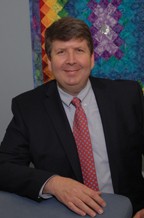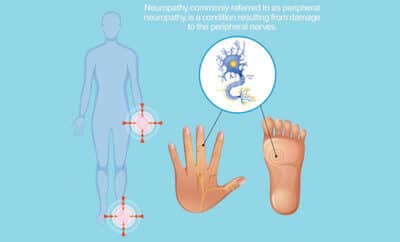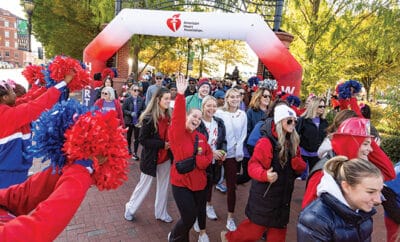Shedding Light on Diabetic Neuropathy and Other Painful Conditions

By Seth D. Torregiani, DO
Laser light has been used therapeutically, and aesthetically, in the treatment of patients for decades. Powerful, pinpoint lasers can cut through tissue more accurately than a scalpel. Lower power lasers are a mainstay of dermatological treatment and are used for everything from tattoo removal, varicose vein treatment to hair removal and wrinkle reduction.
There is another therapeutic area where lasers have, in recent years, begun to have significant impact: pain reduction and tissue repair. Specialized lasers, which emit laser light at wavelengths in the infrared spectrum, and have been used in veterinary medicine for years (to heal damaged tendons in racehorses, for example), are becoming powerful tools to treat pain, repair damaged muscles, tendons and ligaments, and treat a range of other conditions in the human body.
These infrared lasers (K-Laser (k-laserusa.com) is a leading company in this field) are considered Class IV lasers, which makes them significantly more powerful than the typical Class III, or “cold,” lasers that a number of practitioners use. K-Laser Class IV lasers are FDA-approved, and they emit laser light at two different wavelengths that are biologically active. The laser light penetrates several centimeters into the body, and has a range of beneficial physiologic effects on the human body:
• It increases microcirculation in areas where the laser is applied, thereby increasing blood flow and oxygenation to injured tissues and the elimination of metabolic and inflammatory byproducts – all vital components in healing damaged tissues.
• It increases the production of ATP in muscles cells which helps damaged muscle function more efficiently and promotes healing.
• It decreases inflammation.
• It has analgesic (pain-diminishing) effects on nerves.
• It promotes wound healing.
• It improves drainage of fluid from edematous regions of the body.
As a result of its biological effects, the K-laser can have a significant impact on a range of conditions, including:
• Diabetic neuropathy and other types of nerve pain – the K-laser has been so successful in the treatment of this painful condition that one clinician in Minnesota has franchised a practice model that uses laser to treat diabetic neuropathy. In my practice, we have had a number of successful cases treating nerve pain, including diabetic neuropathy, lumbar stenosis, nerve pain following back surgery, and carpal tunnel syndrome.
• Wounds – K-laser therapy has impressive wound healing effects. It promotes and enhances the healing of chronic and difficult-to-heal wounds in diabetics and others. It also promotes rapid healing of fresh surgical scars.
• Plantar fasciitis – We have successfully treated cases of plantar fasciitis and laser therapy can be an extremely effective modality when other treatments fail.
• Tendonitis – By improving blood flow, decreasing inflammation, soothing pain and healing damaged tissues, K-laser should be an early consideration to treat Tennis elbow, Golfer’s elbow, Achilles tendonitis, hamstring tendonitis, and other repetitive motion disorders.
• Rotator cuff syndrome – K-laser can actually help repair damaged or torn muscles and tendons, making a trial of K-laser – prior to considering surgery or other invasive procedures – a very reasonable modality to try.
• Fractures – The laser light emitted by the K-laser can promote and speed up the healing
of fractures.
• Edema – Due to its circulation-promoting properties, K-laser can be very effective in decreasing swelling in the extremities,
including lymphedema.
• Muscle sprains and strains – The K-laser rapidly improves the pain, swelling and dysfunction related to muscle sprains and strains.
• Back pain – K-laser treatment can often be helpful in relieving back pain related to muscle spasm, herniated discs and lumbar stenosis.
• Joint pain – K-laser can be an effective treatment of joint pain due to arthritis and other conditions.
K-laser is very safe to use and treatment is generally pain-free. Even patients with joint replacements or other indwelling devices can be safely treated with laser therapy. K-laser therapy should not be performed over the thyroid gland, in children (as the laser can interrupt the growth plate in the bones of growing children), on or near the abdomen of a pregnant woman, or over an active tumor. Safety glasses must be worn by the patient and operator as the accidental application of laser light to the eye may be damaging to the retina.
Treatments may last anywhere from a minute or two (say, for treatment of an injured finger), to 10 or 20 minutes for more chronic, widespread conditions (such as diabetic neuropathy or lumbar stenosis). During a treatment session, the clinician activates the laser, chooses the optimal dose and treatment time based on pre-programmed clinical protocols, and topically “paints” the area of treatment with a handheld probe that emits the laser energy.
The patient may feel warmth and/or tingling at the site of treatment, otherwise the treatment is generally very well tolerated. Side effects may include a temporary increase in symptoms, usually lasting 24 hours or so, or some soreness at the site of treatment.
The number of sessions required to treat a particular condition depend on the chronicity of the injury, its location, and its severity. A mild, acute ankle sprain may require only a few treatment sessions, while a 10-year history of diabetic neuropathy may require more sessions for an effective treatment.
Dr. Seth Torregiani is a graduate of Western University of Health Sciences in Pomona, CA, where he completed an undergraduate teaching fellowship in osteopathic manipulative medicine. He completed a residency in Internal Medicine and Pediatrics at Christiana Care Health System and is board-certified in both specialties. He has practiced osteopathic medicine, acupuncture and integrative medicine in the greater Wilmington, DE region for over eight years. He has spoken and written widely on integrative medicine, natural approaches to pain, osteopathic medicine and similar topics around the Mid-Atlantic region for many years.





